Creating Threads and Taps | ||||||||
|
| |||||||
The Thread/Tap Definition dialog box appears.
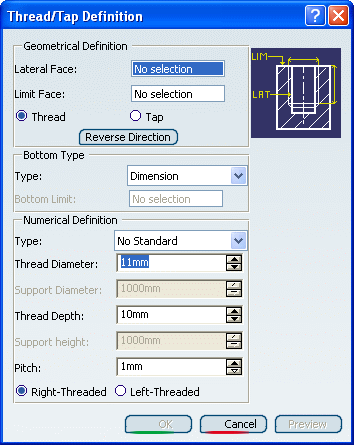
Select the cylindrical surface you wish to thread.
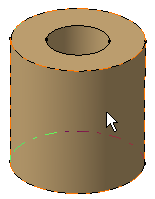
Thread and tap definitions do not depend on the polarity of the cylinder geometry. The Thread/Tap capability lets you specify whether you wish to create a thread or a tap just by selecting the appropriate option.
Because of the geometrical element type you have just selected, by default, the application proposes you to create a thread. As shown below, the Thread option is now selected and a new help image is displayed in the dialog box:
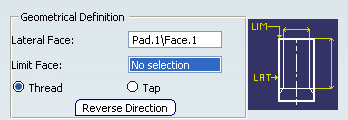
However, if you prefer to create a tap, just select Tap.
Select the upper face as the limit face.
Limit faces must be planar.
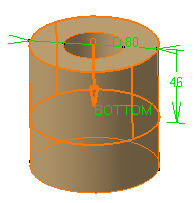
In the dialog box, the Geometrical Definition frame displays the name of the faces you have selected. The Reverse Direction button (as well as the arrow in the geometry area) lets you reverse the thread direction if needed. The Numerical Definition frame provides three different thread types:
- No Standard: if you keep the No Standard option, the box available below is Thread Diameter. You just need to enter the values you need in this box as well as in the Thread Depth and Pitch boxes below.
- Metric Thin Pitch: uses ISO standard values
- Metric Thick Pitch: uses ISO standard values
In addition to these three types, you can add your personal standards as described in Reusing Values Already Defined in a File in the Part Design User's Guide.
For the purposes of our scenario, keep No Standard. As you are creating a thread, you cannot modify the thread diameter value. If you were creating a tap, you could modify it.
Tip: Note that the Edit formula... contextual command is available from the Thread Diameter box, meaning that you can define formulas for managing diameters values. Enter 49 mm as the thread depth. The Support Diameter and Support height boxes are grayed. They are merely informative.
Enter 1.5 mm as the pitch value. The Pitch box defines the distance between each crest.
Check Left-Threaded.
Optional: : Click Preview. Red lines provide a simplified representation of the thread.
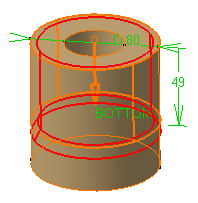
Click OK to confirm. There is no geometrical representation is the geometry area, but the thread (identified as Thread.xxx) is added to the specification tree. The corresponding icon is specific to this feature. Diameter, depth and pitch values appear below Thread in the specification tree.

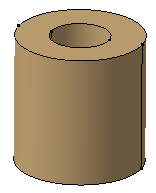
If you create a tap, the application identifies it as Thread.XXX too in the specification tree, but displays a specific icon as shown below:
